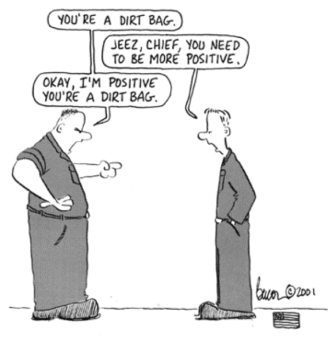 The world’s best animal trainers rely on one simple and profound principle: reward movement towards the behavior you want and ignore the rest. The method works with species from dolphins to goldfish, from tigers to spiders. And, of course, it holds for humans too.
The world’s best animal trainers rely on one simple and profound principle: reward movement towards the behavior you want and ignore the rest. The method works with species from dolphins to goldfish, from tigers to spiders. And, of course, it holds for humans too.
Given a functioning nervous system, any learner reinforced for success rather than punished for failure will learn more quickly, more confidently, and with greater long-term retention. Maybe most importantly, they’ll want to come back for more. A positively reinforced learner tastes success and develops a skill. That accomplishment—and the added sense of agency it triggers—then becomes a reinforcer in itself. Hey, this feels good to get better. I want more of that.
The notion sounds so elegant and rings so true, both intuitively and evidentially. The stuff works. Can we teach and learn in other ways, lashing out at failures or concentrating on corrections? To some degree, of course. But the lessons won’t stick so well, run so deep, or inspire so much. Learning mixed with fear, intimidation, and punishment also breeds resentment and disinterest.
As simple as the insight sounds, applying it takes incredible discipline. As teachers and coaches—or as parents, partners, and friends—we come to believe our value lies in our ability to “improve” the other by seeing and targeting what’s wrong. So many of us have learned through domination and control, even when softened by a smile or compassionate language, that we barely know any other option. Unwittingly, we perpetuate models that turn learners away, snuffing the very fires of curiosity we want to stoke. Then we wonder why kids don’t want to stay in school, or why our work and home relationships involve so much animosity and mistrust.
Occasionally, we can find windows of opportunity to explore different ways of being. Parker Palmer’s Circles of Trust offer one example. In such Circles, participants gather to form a contemplative “community of solitudes.” With ground rules like “no fixing, no advice,” participants find the quiet space for self-exploration they need to welcome the soul’s wisdom. There’s no crashing through the woods of other-improvement. The soul’s wild animal comes to trust the presence of others and slowly emerges to share its insight. And the group learns what can happen when we work in community free of shame and correction.
 This weekend offers another setting for working on the theme. I’m attending my second seminar with TAGteach International, a group applying positive reinforcement principles to develop precision teaching with all kinds of human learning. Here, “TAG” refers to teaching with acoustical guidance. Theresa McKeon and Joan Orr, the two founders of the group, are leading the weekend, joined by Karen Pryor, one of the leading voices (if not the leading voice) in the world of animal behavior training. The participants, too, come with a great host of abilities and experiences: we’ve got folks from quality control and the military, researchers and clinical psychologists, animal trainers and teachers of kids with developmental disabilities, coaches and physicians, a photographer and a Pilates instructor. Already, the level of questions has suggested we’ll learn as much from each other as we do from the formal material. I’m looking forward to our second day tomorrow and I’ll be eager to report some of our findings and further questions.
This weekend offers another setting for working on the theme. I’m attending my second seminar with TAGteach International, a group applying positive reinforcement principles to develop precision teaching with all kinds of human learning. Here, “TAG” refers to teaching with acoustical guidance. Theresa McKeon and Joan Orr, the two founders of the group, are leading the weekend, joined by Karen Pryor, one of the leading voices (if not the leading voice) in the world of animal behavior training. The participants, too, come with a great host of abilities and experiences: we’ve got folks from quality control and the military, researchers and clinical psychologists, animal trainers and teachers of kids with developmental disabilities, coaches and physicians, a photographer and a Pilates instructor. Already, the level of questions has suggested we’ll learn as much from each other as we do from the formal material. I’m looking forward to our second day tomorrow and I’ll be eager to report some of our findings and further questions.
Right now, it’s pretty simple: the more I dig into this stuff, the more I want to know. Hey, this feels good to get better.

LOVE that you are there! I am training 2 little golden retrievers that were thrown away. They were pretty much feral when I got them. Now they trust, laugh and are learning new stuff every day. The first skill set was learning how to get out of the dog pen…they were excited by that until one climbed to the top of the pen to sneak out and ended up on the roof of an adjacent shed. Then what? She liked it that I just laughed. TAG reinforcement keeps people on the joy side of the primitive brain!!!! And is the photographer getting better pictures with TAG?